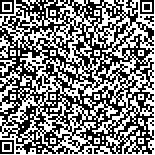| 摘要: |
| 宏条形码分析(metabarcoding analysis)是通过对野外样本的分子标记(即条形码)进行PCR扩增、测序,并利用测序结果分析野外样本物种组成、物种相对丰度,及其时空动态变化。这项在近20年里逐步发展起来的分子技术,得益于DNA测序技术的快速发展,包括测序通量的提升和测序成本的降低,以及生物信息学分析方法的快速开发。基于可操作分类单元(operational taxonomic units,OTUs)分析方法,特别是最近的扩增子序列变异(amplicon sequence variants,ASVs)方法的开发,极大促进了宏条形码分析的应用。在世界及我国的海洋生态领域,宏条形码分析的应用还处于起步阶段。随着分析方法的日趋成熟,可适用于不同应用领域的分子标记不断增加,以及参考数据库的不断完善,宏条形码分析将释放出广阔的应用潜力。可以预期,宏条形码分析将在系统分析我国近岸海域有害藻华物种(及其他浮游生物物种)的组成和相对丰度中起关键作用,通过发现新物种,辨别隐存种,跟踪物种的生物地理学,进而帮助解析有害藻华暴发机理。 |
| 关键词: 有害藻华物种 分子标记 可操作分类单元 扩增子序列变异 宏条形码分析 生物地理学 |
| DOI:10.11759/hykx20200310001 |
| 分类号: |
| 基金项目:青岛海洋科学与技术试点国家实验室主任基金(QNLM201704);中国科学院率先行动“百人计划”;泰山学者特聘专家计划;源头创新计划(人才发展专项-第五批创业创新领军人才研发补助(19-3-2-16-zhc) |
|
| Metabarcoding analysis of harmful algal blooms: Opportunities and challenges |
|
CHEN Nan-sheng1,2,3
|
|
1.CAS Key Laboratory of Marine Ecology and Environmental Sciences, Institute of Oceanology, Chinese Academy of Sciences, Qingdao 266071, China;2.Marine Ecology and Environmental Science Laboratory, Pilot National Laboratory for Marine Science and Technology(Qingdao), Qingdao 266237, China;3.Center for Ocean Mega-Science, Chinese Academy of Sciences, Qingdao 266071, China
|
| Abstract: |
| Metabarcoding analysis is an emerging technology that studies species composition, relative abundance, and spatial- and temporal-dynamics in field samples through PCR amplification, DNA sequencing, and bioinformatics. This technology has benefitted from the rapid advances in DNA sequencing technologies, resulting in the explosive increase in throughput and reduction in sequencing costs, and from the swift development of bioinformatics tools. Earlier, bioinformatics analysis involved application of methods based on operational taxonomic units (OTUs). However, they are being replaced by methods based on amplicon sequence variants (ASVs) that are increasingly promoting metabarcoding analysis. In the field of marine ecology research, compared with other countries, research using metabarcoding analysis in China is still in its infancy. With the rapid development of relevant technologies, including the development of new molecular markers and the enrichment of reference databases, metabarcoding analysis holds great promise in the projects that target harmful algal blooms (and other phytoplankton species) in China. We expect to discover new species, identify cryptic species, follow biogeographical patterns, and reveal the mechanisms underlying harmful algal blooms. |
| Key words: harmful algal bloom molecular markers operational taxonomic unit (OTU) amplicon sequence variant (ASV) metabarcoding analysis biogeography |
